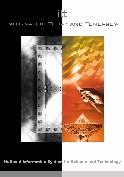
Vol 21 No 3 & 4 September & December 2002
Top patenting organizations
Intellectual Property Owners Association of USA has identified top 300 organizations who have received US Patents in 2001. Top 25 organizations are listed below:
| Rank | Organization | Patents |
| 1 | International Business Machines Corp | 3411 |
| 2 | NEC Corp | 1953 |
| 3 | Canon K K | 1877 |
| 4 | Micron Technology, Inc | 1643 |
| 5 | Samsung Electronics Co. Ltd. | 1450 |
| 6 | Matsushita Electric Industrial Co. Ltd. | 1440 |
| 7 | Sony Corp | 1363 |
| 8 | Hitachi Ltd. | 1271 |
| 9 | Mitsubishi Denki K K | 1184 |
| 10 | Fujitsu Ltd. | 1166 |
| 11 | Toshiba Corp. | 1149 |
| 12 | Lucent Technologies, Inc | 1109 |
| 13 | General Electric Co. | 1107 |
| 14 | Advanced Micro Devices. Inc | 1086 |
| 15 | Hewlett-Packard Co | 978 |
| 16 | Intel Corp | 809 |
| 17 | Texas Instrument. Inc | 799 |
| 18 | Siemens AG | 793 |
| 19 | Motorola. Inc | 778 |
| 20 | Eastman Kodak Co | 719 |
| 21 | Xerox Corp | 716 |
| 22 | US Philips Corp | 702 |
| 23 | Robert Bosch GmbH | 700 |
| 24 | United Microelectronics Crop | 584 |
| 25 | Fuji Photo Film Co. Ltd | 583 |
|
(USA-IPO Website as on June 6, 2002) |
||
- Reproduced from WISTA Intellectual Property 2002; (Aug):5
Patenting Software by Indians
It is known to all that India's software industry earns a lot of foreign exchange for the country. Obviously, the industry could not achieve so much if it was not highly knowledgeable and did not have a large pool of highly skilled software professionals and other professionals to help converting their effort into market. A study of patents filed by them would be extremely useful in determining the innovation track on which the industry is contemplating to move. A word of caution is needed at this point. The Indian Patent Act until recently i.e., before the latest amendments, was silent on the issue of software, which had promoted varied interpretation of the law. Therefore, the industry could have possibly avoided filing of applications in India. However, ever since India became a signatory to TRIPS, the Indian companies could have filed their patent applications in developed countries. The present analysis is based on the software-related patent applications filed by Indians/Indian companies in India and other countries.
The data regarding filing of applications in India is quite interesting. Most of the software-related applications (as inferred from the titles of applications) filed during the period of the study i.e. 1999-2001 have emanated from individuals rather than well known companies. Many software companies would be under the category of small scale industries which may be proprietorship companies. A filing fees for individual is only Rs.1500/- as compared to Rs.5000/- for company, filing in an individual's name may have been adopted as a preferred choice. In all 83 applications were filed during the period.
A study of the top 20 export-oriented Indian software companies was made to see their patent portfolio outside the country. ST Microelectronics have filed 8 applications in the US Patent Office and all of them have been published. Apparently, WIPRO's unit based in USA got a US patent in 1999 on network management using browser-based technology. Most of the inventors in this patent are Indian citizens. Kudrollis Software Inventions Pvt Ltd, a Mumbai-based company, received a US patent in August 2001 on abbreviating and compacting text to cope with display space constraints in computer. Satyam Enterprise Solutions Ltd, India and In Touch Technologies based in USA received a joint US patent in 2001 on telephony platform.
The amended Patent Act has excluded patenting of computer software per se. The term per se is not defined in the Act. However, it would generally be construed that a software which has a practical application or a technical effect may not remain a software per se.
- Reproduced from Intellectual Property Rights 2002; 8(7-9):6
Principle for intellectual properties strategy toward "Nation based on intellectual assets"
The government of Japan held on 22 May the 3rd Conference on Intellectual Properties at the official residence of the prime minister and approved the essence of principle for a strategy that indicates a route for the realization of "Nation based on intellectual properties." Based on this, the government will conduct renovation of regulations on intellectual properties by the target year FY 2005.
The government aims at promoting the enhancement of added value of products and services on the basis of intellectual properties to form the country with active economy and society, so-called the "Nation based on intellectual properties."
According to the essence of principle, ideology such as the activation of an intellectual creativity cycle should be decided as a national goal and "Basic law on intellectual properties" (tentative name) which stipulates the installation of "Intellectual properties strategy headquarters" (tentative name) with the function and responsibility to strongly promote the principle for such strategy, should be submitted by the plenary session of the Diet in FY 2003.
Specifically, the following have been picked up as items to be handled in a concentrated and systematic way by FY 2005: (1) promotion of creating intellectual properties, (2) reinforcement of protection, (3) promotion of utilization (4) fostering of human resources and improvement of national consciousness.
- Reproduced from Science & Technology in Japan 2002; 14(7):7
Copyright and software protection
The US Copyright Office announced a new Web-based search method for finding copyright information about millions of books, music recordings, movies, software and other works. The service is designed with user-friendly features for occasional users. Users can search copyright records dating back to 1978 in three categories: (1) General works, consisting of books, music, films, maps and software; (ii) Serials, such as magazines and newspaper; and (iii) Documents, such as contracts, licences, and wills that relate to copyright ownership. The service is an alternative to an older, Telnet-based system.
- Reproduced from Tech News 2002, 13(3), 1
UN Treaty
The United Nations announced a treaty that brings world copyright law into the digital age by protecting authors and creators of content on the Internet. This has come into effect from 6 March 2002. Mr Kamal Idris, Director-General, WIPO, said it would be an important day in the history of copyright, making it better equipped to meet the technological challenges of cyberspace.
- Reproduced from Tech News 2002, 13(3), 2
Patent Awareness Workshop at REC, Silchar
In order to create awareness about intellectual property rights (IPR), patent and copyright issues, Technology Information Forecasting and Assessment Council (TIFAC), Department of Science & Technology (DST), Govt. of India sponsored the Workshop. It was organized at Regional Engineering College (REC), Silchar on 10th May 2002. In all, 130 participants from different education and R&D institutes of North-East participated
Prof B U A Barbhuiya, Principal (i/c), REC, in his inaugural address highlighted the role and importance of IPR and patent information in the context of scientific innovation. Mr R Saha, Adviser, DST and Director, Patent Facilitation Centre, TIFAC, New Delhi and the chief guest of the programme in his address highlighted the role of PFC and TIFAC in protecting the IPR. He further added that most scientists are not sure about their intellectual property right and most often, find legal language to be confusing. However, they have an equal responsibility to protect the research being done by them or else the opportunities underlying their research could be unduly lost to others. They must learn to manage protection of their IPRs and dovetail their learning with day-to-day R&D activities and practices. Patents have not been frequently used in India as input for deciding research topics. This would become increasingly important in days to come as India also caches the attention of foreign companies for patenting. Hence, patents search and study of available patents become essential. The notion that no new patent can be obtained in respect of already patented area is not correct. Further, patents provide knowledge about the state-of-the-art technology and thus can determine R&D priorities, said Mr Saha.
Sri Rajagopalan, Patent Attorney, Rajagopalan Associates, Kolkota, the guest of honour of the workshop in his address talked about the patent, patent acts and rules, patent law, copyright and trademark. He also said that intellectual property is the property, which has been created by exercise of intellectual faculty. India has a long and credible record of protection of intellectual property right through a system of well-developed substantive laws and established legal and administrative infrastructure for the enforcement of IPR The importance of the patent system for stimulating inventions, research and development, which in turn cause the industrial development of the country, is well recognized in India.
Dr R Srinivas, Patent Examiner, Kolkota Patent Office explained that the patent is an exclusive right granted by a country to the owner of an invention to make, use, manufacturer and market the invention, provided the invention satisfies certain conditions stipulated in the law. Exclusive right implies that no one can make, use, manufacture or market the invention without the consent of the patent holder. This right is available only for a limited period of time. However, the use or exploitation of a patent may be affected by other laws of country, which has awarded the patent. These laws may be related to health, safety, food, security, etc. Further, existing patents in similar areas may also come in the way. Sri Y D Panwar, Scientific Officer, TIFAC, discussed the patent information system in India, the patent databases available in India and elsewhere and the Internet sites for patent search.
- Reported by K C Satpathy, Coordinator of the Workshop
Information Today & Tomorrow, Vol. 21, No. 3 & 4, September & December 2002, p.15-p.16 & p.19
http://itt.nissat.tripod.com/itt02034/ipr02034.htm





















